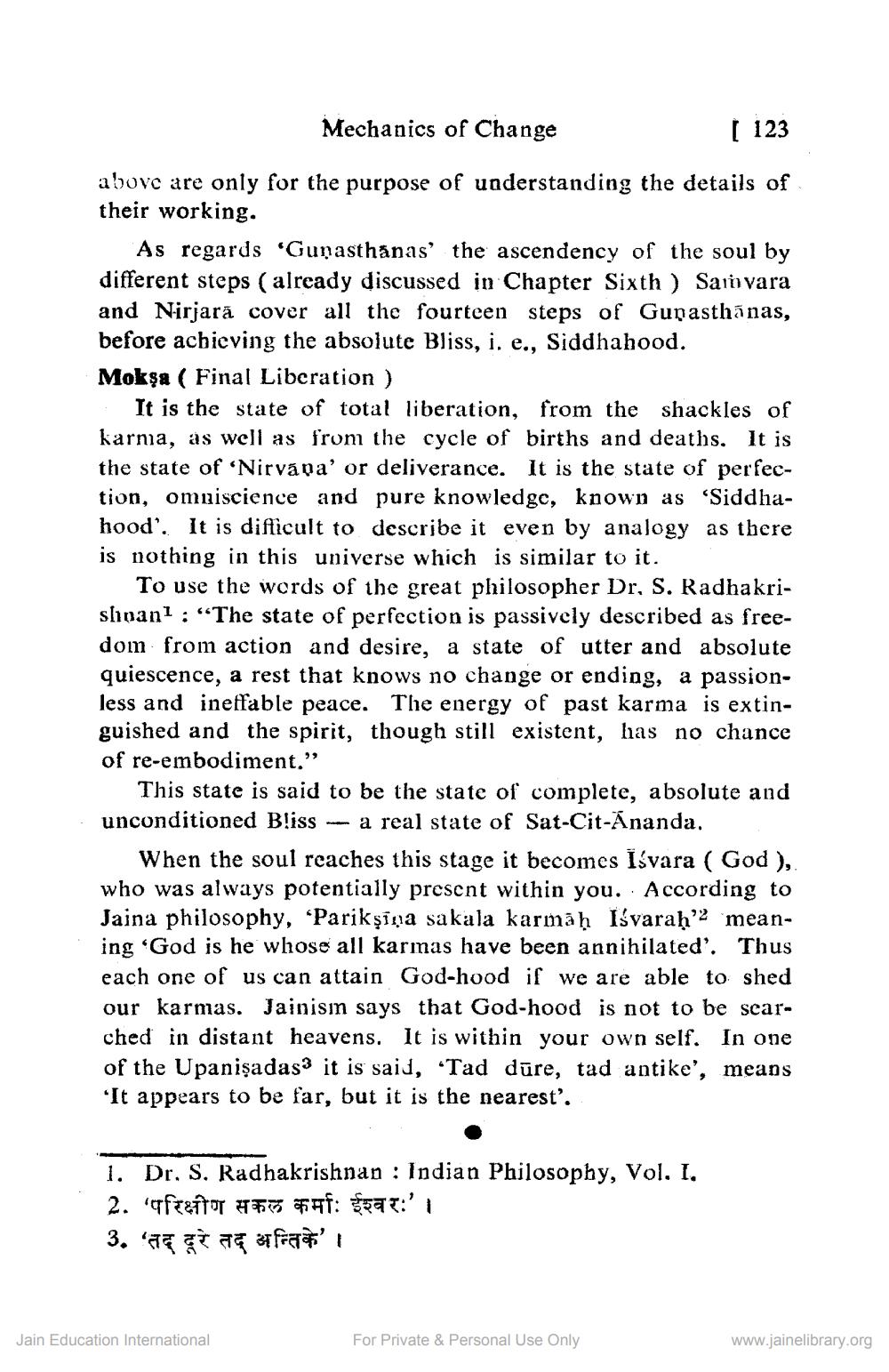________________
Mechanics of Change
[ 123
above are only for the purpose of understanding the details of their working.
As regards 'Gunasthanas' the ascendency of the soul by different steps ( already discussed in Chapter Sixth ) Saivara and Nirjarā cover all the fourteen steps of Gupasthānas, before achieving the absolute Bliss, i. e., Siddhahood. Mokşa ( Final Liberation )
It is the state of total liberation, from the shackles of karma, as well as from the cycle of births and deaths. It is the state of 'Nirvapa' or deliverance. It is the state of perfection, omuiscience and pure knowledge, known as "Siddhahood'. It is difficult to describe it even by analogy as there is nothing in this universe which is similar to it.
To use the words of the great philosopher Dr, S. Radhakrishivan? : “The state of perfection is passively described as freedom from action and desire, a state of utter and absolute quiescence, a rest that knows no change or ending, a passionless and ineffable peace. The energy of past karma is extinguished and the spirit, though still existent, has no chance of re-embodiment."
This state is said to be the state of complete, absolute and unconditioned Bliss - a real state of Sat-Cit-Ananda.
When the soul reaches this stage it becomes Isvara ( God), who was always potentially present within you. According to Jaina philosophy, “Parikşioa sakala karmaḥ śvarah'2 meaning 'God is he whose all karmas have been annihilated'. Thus each one of us can attain God-hood if we are able to shed our karmas. Jainisin says that God-hood is not to be scarched in distant heavens. It is within your own self. In one of the Upanişadas3 it is said, “Tad dūre, tad antike', means 'It appears to be far, but it is the nearest'.
1. Dr. S. Radhakrishnan : Indian Philosophy, Vol. I.
2. Tfi&ítor 43 *#f: $597:', 3. 79 in fratel
Jain Education International
For Private & Personal Use Only
www.jainelibrary.org




